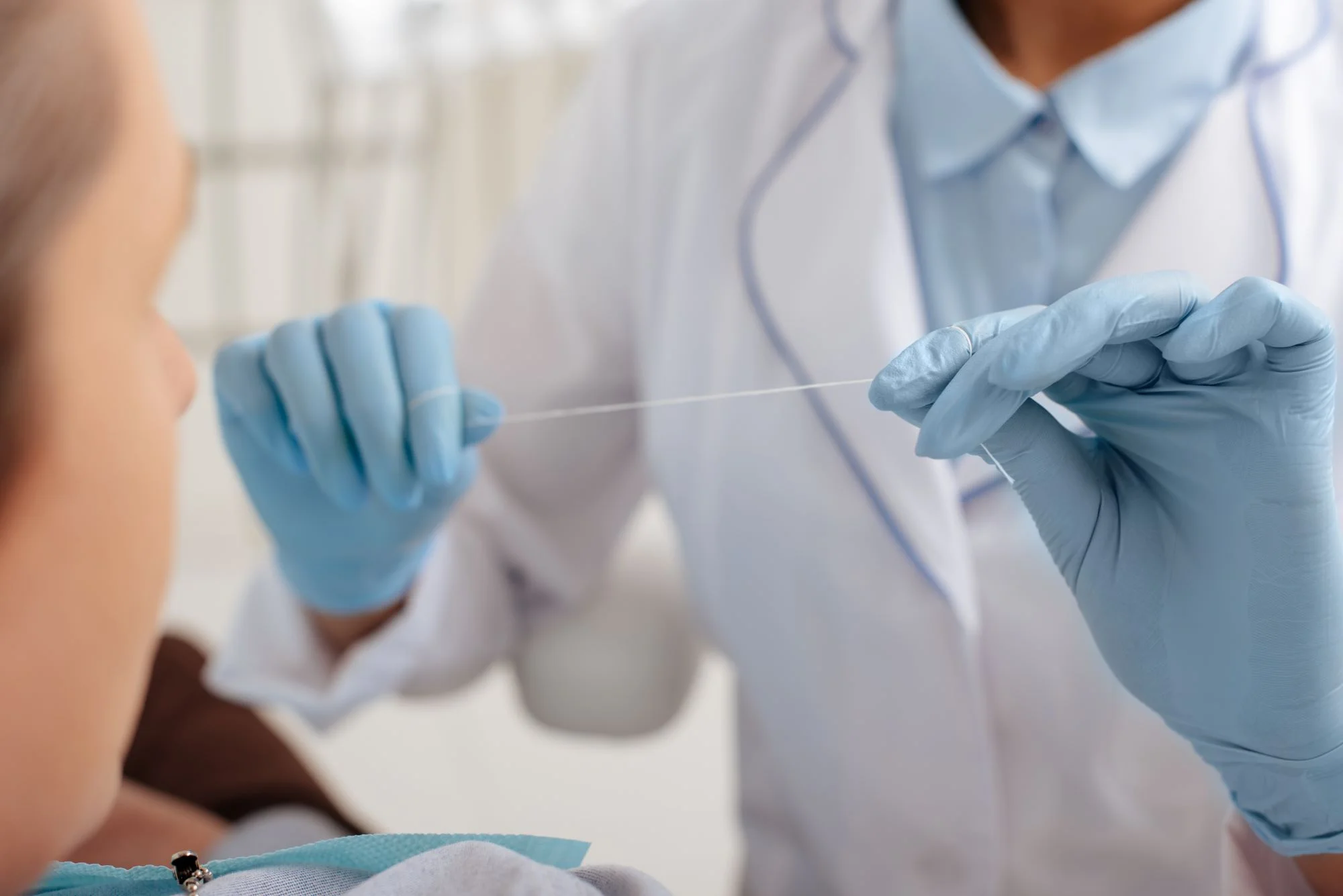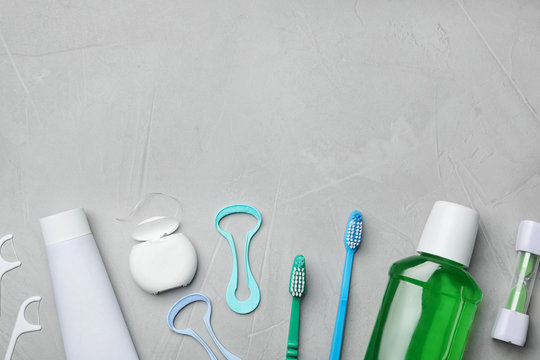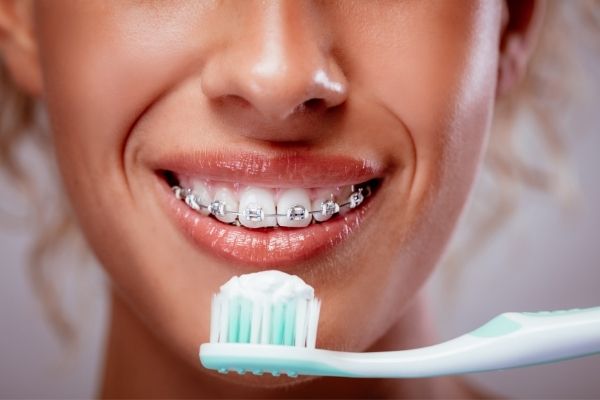Last Updated on: 5th December 2024, 09:40 am
How to brush your teeth with braces
For an acceptable or ideal cleaning of the teeth, we must train ourselves from an early age and improve our technique with the passing of time. If you took the daily and regular cleaning of your teeth very lightly before braces, now that you have them, you should worry about it. The loss of oral hygiene predisposes one to losing teeth.
Brushing techniques to not lose your teeth
There are brushing techniques to consider so as not to lose your teeth, so pay attention:
Brush the front of the teeth you see when you smile
Position the brush in front of the teeth at a 45 ° inclined angle and distribute the toothpaste with the toothbrush in the areas to be brushed, taking care to cover the full area of the tooth.
Start at the outside of the lower teeth. Bite your teeth together. Rub the toothbrush back and forth in sweeping motions across the lower teeth as you work your way from the back to the front. Make sure to reach the molars all the way. Spit if necessary.
We move on to brushing the upper teeth. With your teeth still together, brush gently in a circular motion. Make sure to move the toothbrush across the exterior of all the front teeth and also around the outside of the molars. If it is difficult to reach the posterior part of the molars, open your mouth a little and try to place the brush with back and forth movements.

If you use a regular toothbrush, move the brush toward the gum line and the top of the tooth as well. This helps dislodge any food particles stuck directly at the top or bottom of the braces. In addition, it helps to remove the plaque adhered to the surfaces between the teeth and gums.
Use a small circle motion to brush braces. Spend at least 25-30 seconds on each segment. You can also use your interdental brush to brush the tops of your braces. Most braces have holes (very hard to see), so try moving the interdental brush down on each one.
Brush the inside of your teeth
Move the toothbrush back and forth, up and down, and then in circular motions on the inside of the upper and lower teeth. When you have braces, the inner side of your teeth seems easier to brush because the braces are on the outer or front side.
Brush the crowns of your teeth
Rotate your toothbrush perpendicular to the spaces between the teeth. Scrub the brush from side to side and in a circular motion. This will allow the removal of the soft plaque adhered to braces and in interdental areas.
For a thorough cleansing let’s consider other areas of the moueth
Your mouth is full of germs and plaque that feed the creation of gingivitis. You should also brush and massage your gums, cheeks, and tongue. [1] Spit if necessary before starting.
With your toothbrush, gently begin brushing the gums above (or below) the teeth. Brush gently and vertically in the direction of the brace supports.

Then place the brush 180 ° on the cheeks and massage gently, being careful not to do it in a forceful or hasty manner.
Turn the brush down and brush the soft bottom and gums where the tongue rests. Then brush the palate.
Lastly, stick out your tongue and brush it. Be sure to breathe through your mouth to avoid gagging. Spit and rinse your mouth and toothbrush.
The last is to verify in a facial mirro that for the teeth with braces
no food remains caught. If you detect any, have an interproximal brush on hand and remove from the spaces between the teeth and the braces.. If there is debris between the tooth and the gum, you must use dental floss.
6. Remember to rinse your mouth with water; swish it for at least 30 seconds and then spit. This helps remove the soft plaque in the oral cavity.
How to floss?
Flossing seems like a difficult task to do with braces. You may want to consider Plackers, a floss on a stick, Platypus Orthodontia Flossers, or water floss. These flossing tools are much quicker and easier to use than regular dental floss and can be purchased at most stores.
Take a long piece of floss (about 18 inches or 46 cm), wrap it around your index finger in each hand, and move it in between each tooth gap. Try to bend it around the tooth to each side, forming a “C” rather than flossing straight across. That will remove any plaque still sticking there.

If you have finishing wires on your braces, it can be nearly impossible to floss under or over a double set, so simply push the floss down, as described, into the tooth space; however, if you do not have these finishing wires, it is recommended to floss under or over the braces. It is the most effective way to clean your teeth and keep gingivitis at bay.
Consider using a water flosser, which is an electronic water jet device ideal for people with braces. It flosses by removing food and plaque in the crevices that toothbrushes cannot reach.
Use of mouthwash

After brushing the teeth and performing the appropriate flossing, we must complement the hygiene of the oral cavity with the use of a mouthwash. Do it for at least 40-45 seconds, swish and gargle, and then spit, taking care not to rinse with water as the mouthwash must remain to enhance its antibacterial properties.
Considerations before, during and after treatment with braces.
- Oral hygiene accessories – toothbrushes. Choose your toothbrush. Although a normal one will work, consider an electric or sonic toothbrush designed to clean around braces. Make sure you use the correct amount of pressure, allowing the head to rotate fully. This will provide a more efficient cleaning and save time.
- Avoid excess consumption of carbohydrates with a high amount sugar or fermentable content.
- Try to consume a balanced diet rich in essential vitamins for the best functioning of the body.
- Go regularly to a dental hygienist for a review of your oral health status.
How do i take care of my gums if i wear braces?

Having healthy gums is as important as having healthy teeth; therefore we must take care not to leave any food particles in our mouths. We must practice oral care and hygiene on a regular basis, especially between teeth and the braces. For this, use a good toothbrush, a good brushing technique, regular flossing, mouthwash, etc.
Risks of poor oral hygiene in patients with braces
The dental plaque that remains uncleaned from the oral cavity, teeth, and tongue has the ability to decompose the enamel layer protecting the teeth. This dental plaque contains pathogenic bacteria that release acids from their metabolism, which cavitate teeth. Cavities and periodontal disease are very prevalent today to the regret of many dentists who consider them preventable. They should have decreased in current years.
Contact Us for more information about how to brush yourh teeth with braces
Brushing the teeth should not be an obligation but rather for the greater good of oral health. This is especially true for patients who wear braces. Brushing is difficult at first, but sticking with it will help you reach this goal. Consider investing time and money in your oral health as something to do today to avoid diseases tomorrow.
If you have any questions about this or other topics, contact us at Channel Island Family Dental, as well as on our Facebook page. At Channel Island Family Dental, we are always attentive to your needs to make a timely diagnosis. In addition, our dentists in Oxnard, Santa Paula, Newbury Park Ventura, and Port Hueneme will guide you to the best treatment to give you back your best smile.



